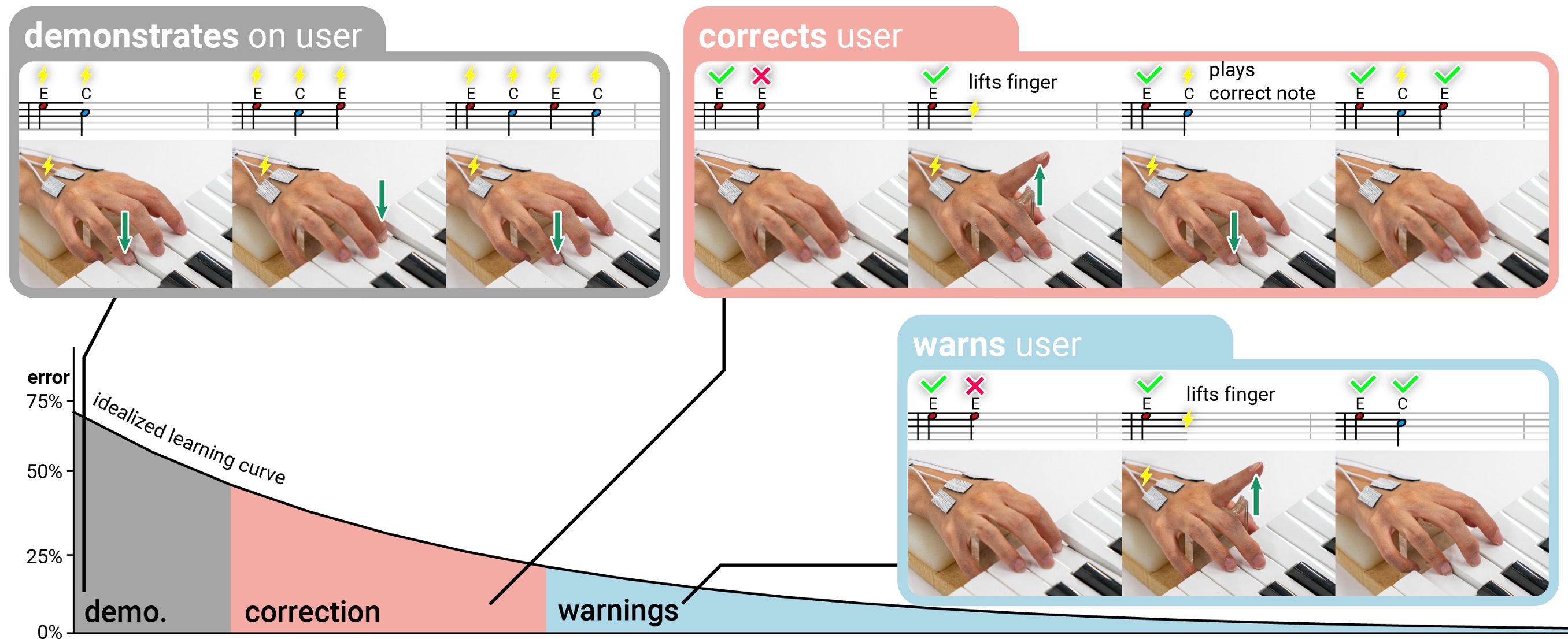Yun Ho

PhD Student, University of Chicago
Yun Ho | HCI PhD student
CV Google Scholar Twitter LinkedIn
I am a first-year Computer Science PhD student at the University of Chicago, advised by Professor Pedro Lopes.
My research focuses on Human-Computer Interaction. I play with body movements and perceptions, and I am curious about how people feel when a device moves you.
I have a background in psychology. Aside from HCI, I love dancing and photography.
Publications
Adaptive Electrical Muscle Stimulation Improves Muscle Memory
Siya Choudhary*, Romain Nith*, Yun Ho*, Jas Brooks, Mithil Guruvugari, Pedro Lopes. CHI’25 (full paper) CHI’25 paper video
Electrical muscle stimulation (EMS) can assist in learning motor skills. However, existing EMS systems provide static demonstration—actuating the correct movements, regardless of the user’s learning progress. Instead, we propose a novel adaptive-EMS that changes its guidance strategy based on the participant’s performance. The adaptive-EMS dynamically adjusts its guidance: (1) demonstrate by playing the entire sequence when errors are frequent; (2) correct by lifting incorrect fingers and actuating the correct one when errors are moderate; and (3) warn by lifting incorrect fingers when errors are low. We found that adaptive-EMS improved learning outcomes (recall) compared to traditional EMS—leading to improved “muscle memory.”

SplitBody: Reducing Mental Workload while Multitasking via Muscle Stimulation
Romain Nith, Yun Ho, Pedro Lopes. In Proc. CHI’24 (full paper) CHI’24 paper video
Techniques like electrical muscle stimulation (EMS) offer promise in assisting physical tasks by automating movements. However, existing actuation systems improve the performance of a task that users are already focusing on. Instead, we investigate whether these interactive-actuation systems (e.g., EMS) offer any benefits if they automate a task that happens in the background of the user’s focus. In our study, participants performed a cognitively-demanding multitask aided by EMS (SplitBody condition) or performed by themselves (baseline). We found that with SplitBody performance increased (35% on both tasks, 18% on the non-EMS-automated task), physical-demand decreased (31%), and mental-workload decreased (26%).

GazePrompt: Enhancing Low Vision People’s Reading Experience with Gaze-Aware Augmentations
Ru Wang, Zach Potter, Yun Ho, Daniel Killough, Linxiu Zeng, Sanbrita Mondal, Yuhang Zhao. In Proc. CHI’24 (full paper) CHI’24 paper
Reading is a challenging task for low vision people. While conventional low vision aids (e.g., magnification) offer certain support, they cannot fully address the difficulties faced by low vision users, such as locating the next line and distinguishing similar words. To fill this gap, we present GazePrompt, a gaze-aware reading aid that provides timely and targeted visual and audio augmentations based on users’ gaze behaviors. GazePrompt includes two key features: (1) a Line-Switching support that highlights the line a reader intends to read; and (2) a Difficult-Word support that magnifies or reads aloud a word that the reader hesitates with. We found that GazePrompt significantly reduced participants’ line switching time, reduced word recognition errors, and improved their subjective reading experiences.
